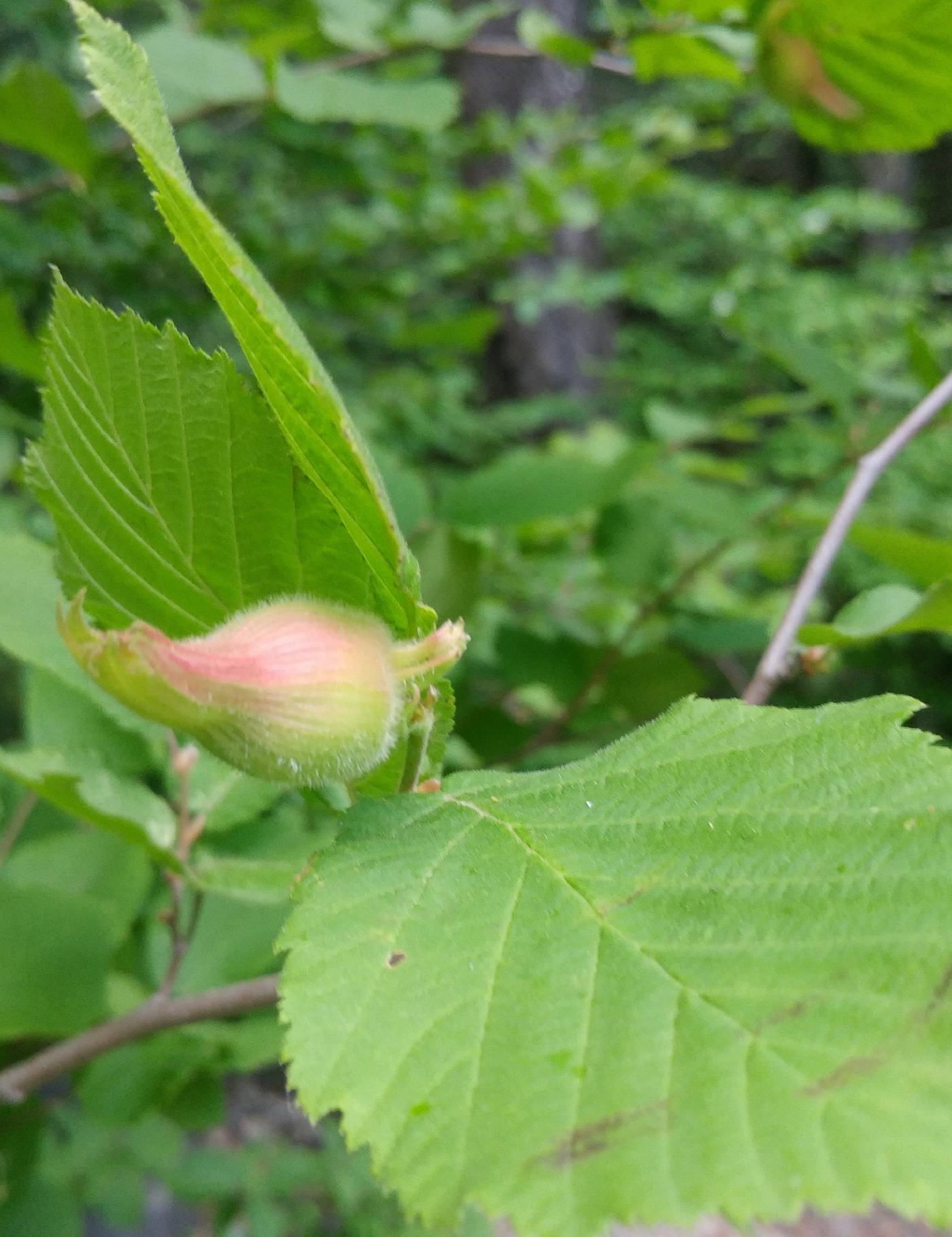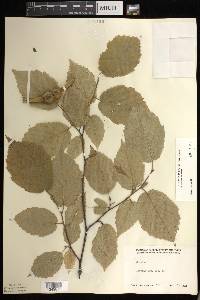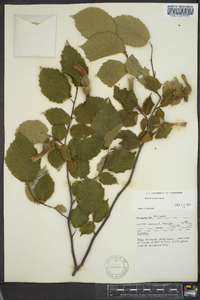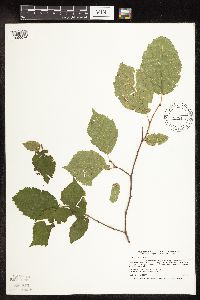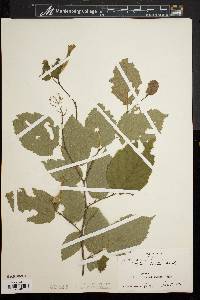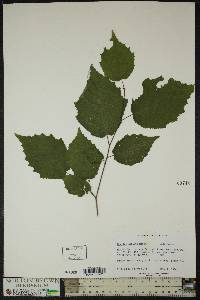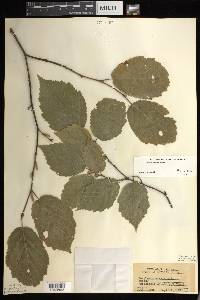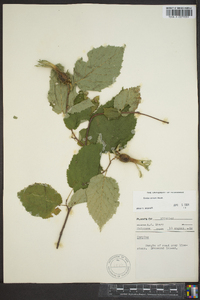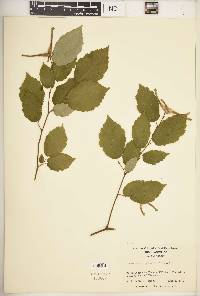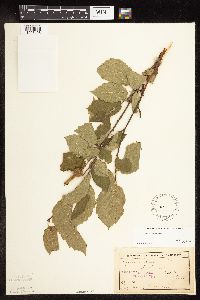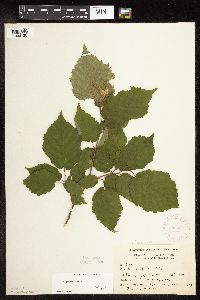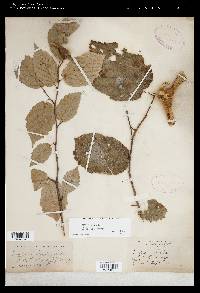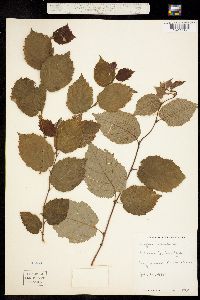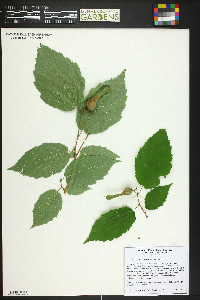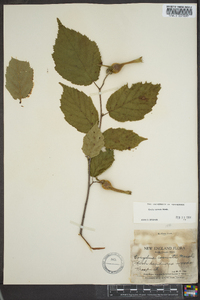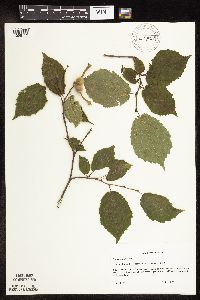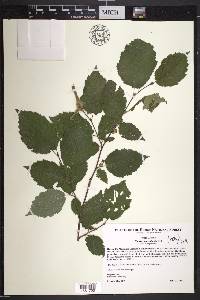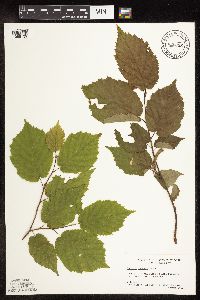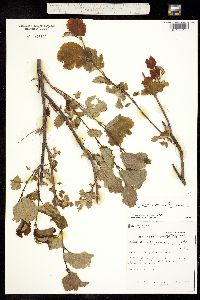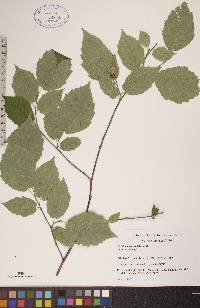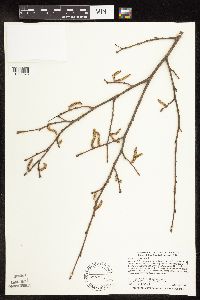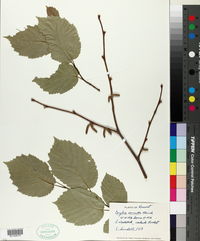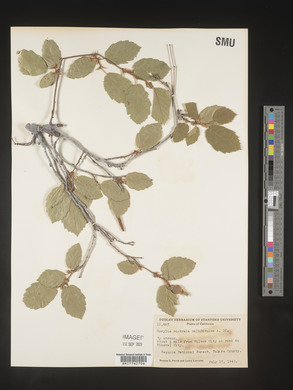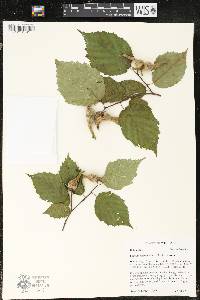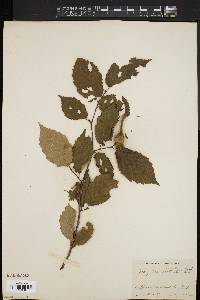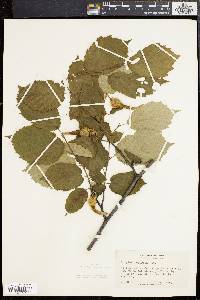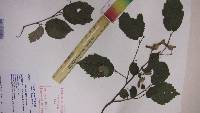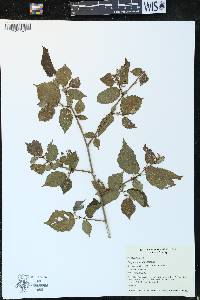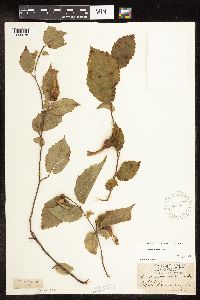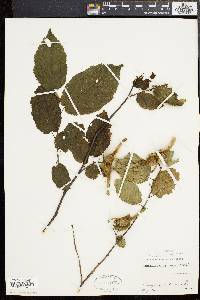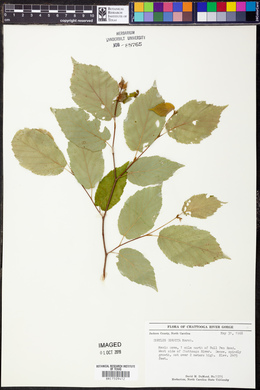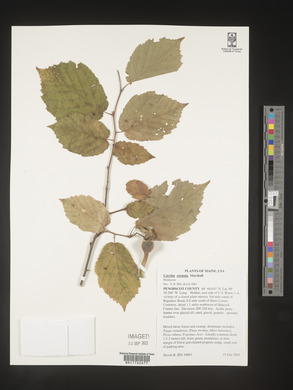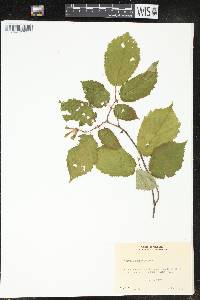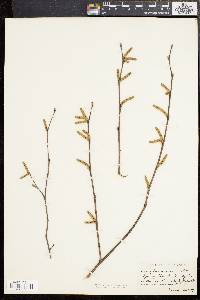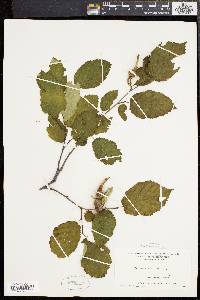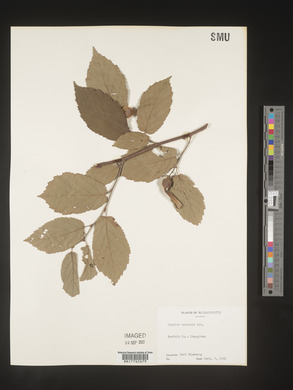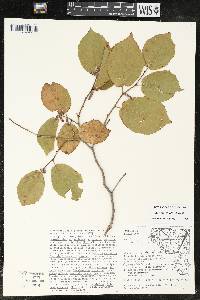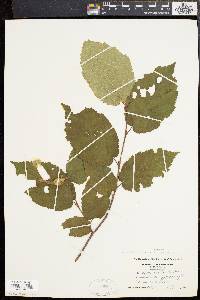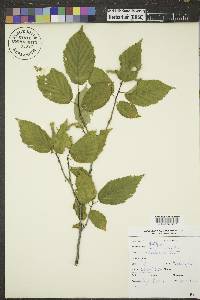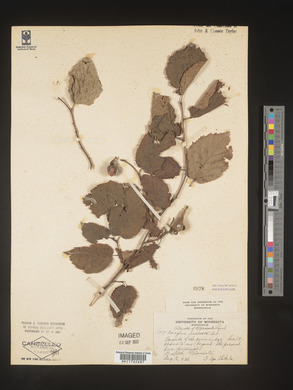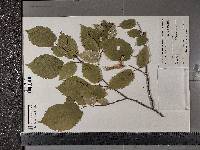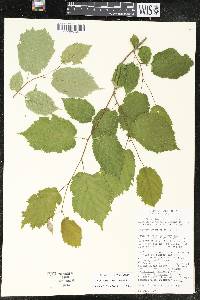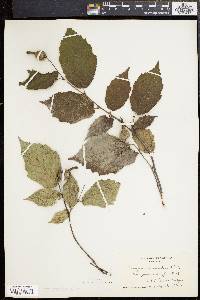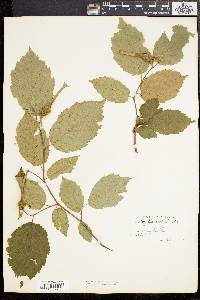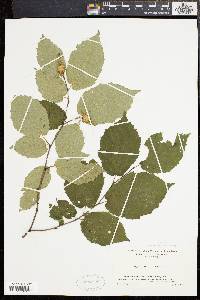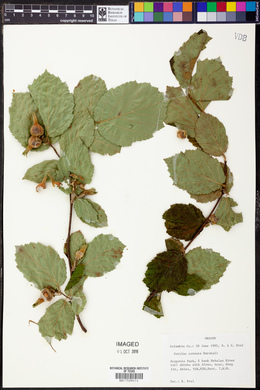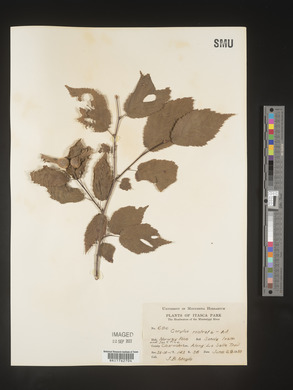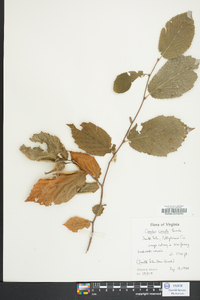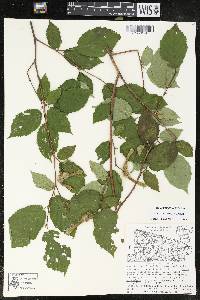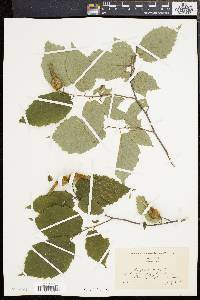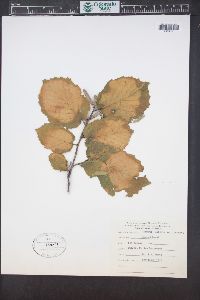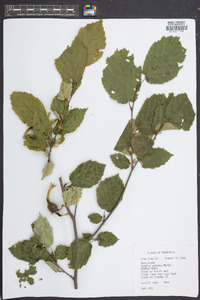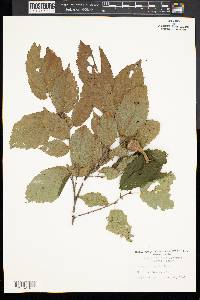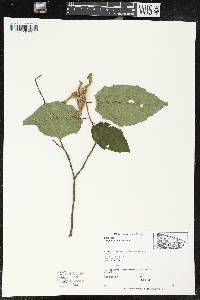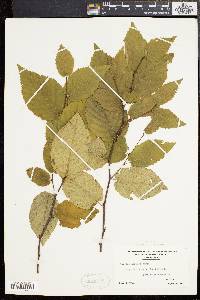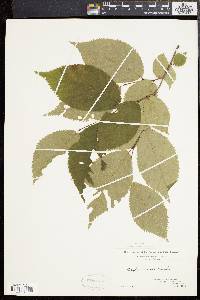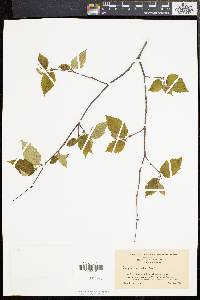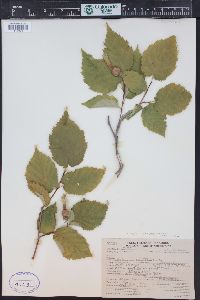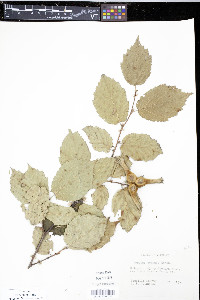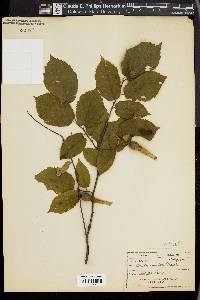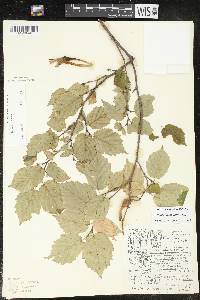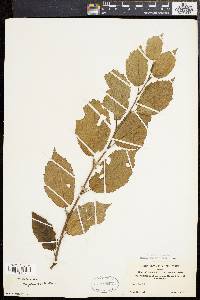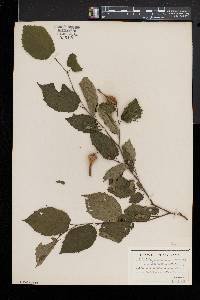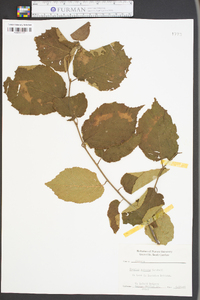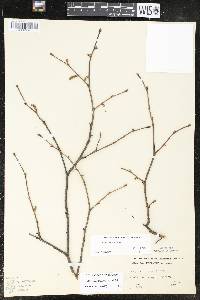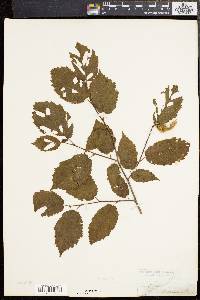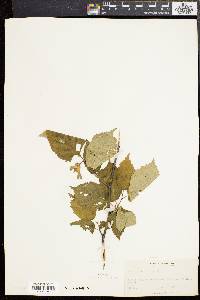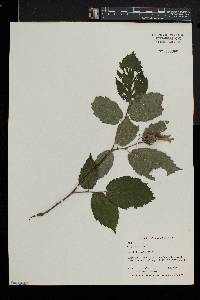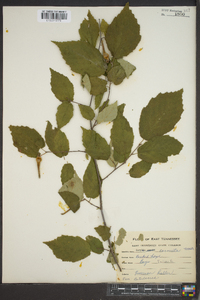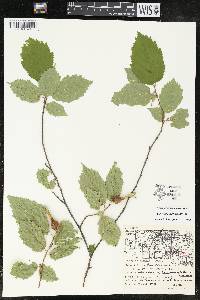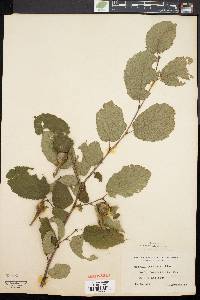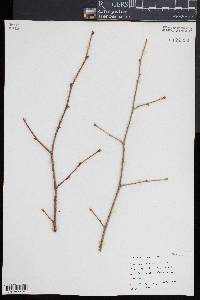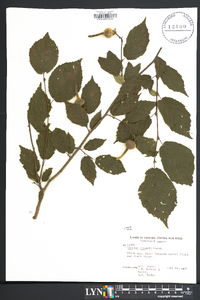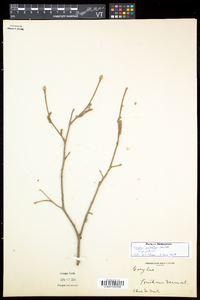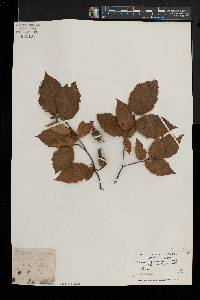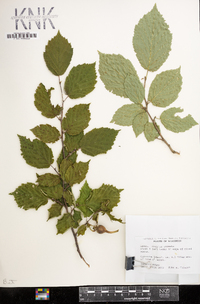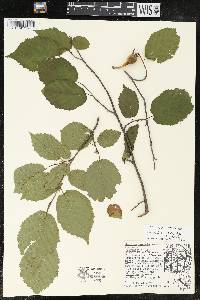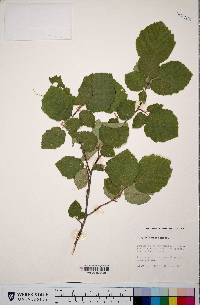
|
|
|
|
Family: Betulaceae
Beaked Hazelnut
|
Shrubs or trees , open-spreading, 4--8(--15) m. Bark light to dark brown, smooth. Branches ascending; twigs glabrous to sparsely pubescent, sometimes with glandular hairs. Winter buds containing inflorescences ovoid, 3--5 × 3--4 mm, acute. Leaves: petiole glabrous to moderately pubescent, with or without glandular hairs. Leaf blade nearly orbiculate to narrowly ovate or ovate-oblong, often nearly angular and slightly lobulate near apex, 4--10 × 3.5--12 cm, thin to leathery, base narrowly cordate to narrowly rounded, margins coarsely and often irregularly doubly serrate, apex obtuse to acute or acuminate; surfaces abaxially glabrous to moderately pubescent, usually pubescent on major veins and in vein axils. Inflorescences: staminate catkins lateral along branchlets on short shoots, usually in clusters of 2--3, 4--6 × 0.5--0.8 cm; peduncles 0.5--10 mm. Nuts in clusters of 2--6, completely concealed; bracts bristly, connate at summit, lengthened into extended tubular beak. Corylus cornuta was used medicinally by Native Americans as an emetic, for teething, to expel worms, to heal cuts, and as an astringent (D. E. Moerman 1986).
Shrub, occasionally a small tree 1 - 6 m tall Leaves: alternate, stalked, 5 - 12 cm long, 3.5 - 9 cm wide, oblong to egg-shaped with a narrow heart-shaped to rounded base and pointed tip, coarsely toothed, usually hairy along veins of lower surface. Flowers: either male or female, found on the same tree (monoecious). Male flowers are borne in in clusters of two to three catkins 4.5 - 6 cm long. Female flowers red and tiny. Fruit: a nut enclosed by bracts, in clusters of two to six. The bristly bracts are fused into a beak-like tube extending two to three times the size of the nut. Twigs: light brown, smooth to slightly hairy. Buds: egg-shaped, 3 - 5 mm long. Form: open and spreading. Similar species: Corylus americana has glandular hairs on its twigs and the nuts are surrounded by two bracts resembling lettuce leaves. Flowering: very early spring Habitat and ecology: Only one known collection of this species was made near Horlicksville in Racine County. The area was destroyed in the early 1900s, and it is likely the species is extirpated from the Chicago Region. Elsewhere, it is found in wooded ravines. Occurence in the Chicago region: native Notes: Squirrels enjoy eating the nuts of this species. Commercially produced hazelnuts (or filberts) come from C. maxima and C. colurna. Etymology: Corylus is the Greek name for hazel. Cornuta means horned. Author: The Morton Arboretum Shrub 1-3 m, the young twigs villous at first; lvs oblong or oblong-obovate, short-acuminate, coarsely and doubly serrate, broadly rounded to subcordate at base, pale green beneath and ±pubescent, especially on the veins and in the vein-axils; catkins sessile or nearly so; involucre 4-7 cm, usually densely bristly below, prolonged beyond the nut into a long, slender beak cut at the summit into narrowly triangular lobes; nut short-ovoid, scarcely compressed, 1-1.5 cm; 2n=22. Moist woods and thickets; Nf. to B.C., s. to N.J., Pa., O., Mo., Oreg., and in the mts. to n. Ga. (C. rostrata) Gleason, Henry A. & Cronquist, Arthur J. 1991. Manual of vascular plants of northeastern United States and adjacent Canada. lxxv + 910 pp. ©The New York Botanical Garden. All rights reserved. Used by permission. |
This project was made possible in part by the Institute of Museum and Library Services [MG-70-19-0057-19].
Powered by Symbiota

